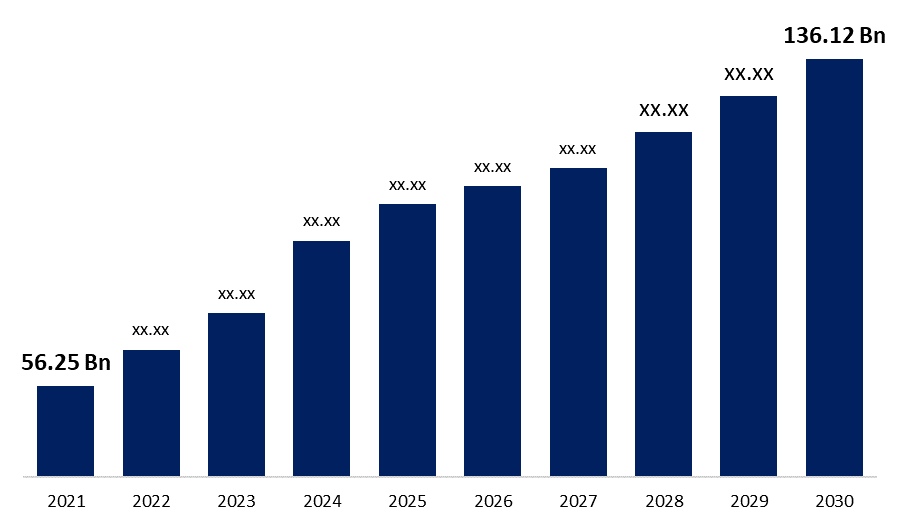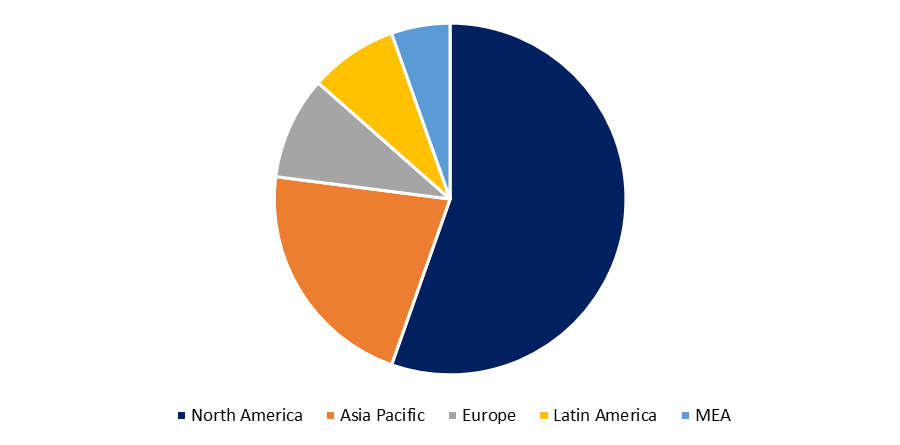Global Last Mile Delivery for E-Commerce Market Size to grow USD 136.12 Billion by 2030 | CAGR of 8.13 %
Category: Consumer GoodsGlobal Last Mile Delivery for E-Commerce Market Size To Exceed USD 136.12 Billion By 2030
The Global Last Mile Delivery for E-Commerce Market was valued at USD 56.25 billion in 2021 and is expected to reach USD 136.12 billion by 2030, growing at a CAGR of 8.13 % during 2021-2030. as per the latest research report by Spherical Insights & Consulting.

Get more details on this report -
Last mile delivery might span anything from a few blocks to 50 or even 100 kilometers. Since its inception, the e-commerce sector has grown tremendously and continues to gain traction. By 2021, worldwide retail e-commerce revenues are expected to surpass $4.5 trillion. Currently, the e-commerce sector is expanding rapidly in tier 2, tier 3, and rural areas as a result of factors such as increased internet connectivity penetration, improved power resources, and an increase in the number of smartphones, targeted advertisements, digital payment options, and people's changing aspirational needs. With the increased volume of transactions, logistics is no longer merely a supporting role, but rather a major differentiator in customer service. The 'last mile delivery' is the major part of logistics that serves as a differentiating factor. Last mile or home delivery is the single point of contact between the provider and the end consumer in the case of e-commerce. As a result, in order to provide a better consumer experience, e-commerce players must priorities this final leg of the delivery process.
Browse key industry insights spread across 205 pages with 117 market data tables and figures & charts from the report "Global Last Mile Delivery For E-Commerce Market Size, Share & Trends, COVID-19 Impact Analysis Report, By Type (Electronics, Clothing, Luxury, Health Products, and Domestic Appliances), By Business Model (Business to Business (B2B), Business to Consumer (B2C), Consumer to Consumer (C2C), Consumer to Business (C2B), and Business to Government (B2G)), By Delivery (Deferred Delivery, Time-Definite Delivery, Same Day Delivery, and Instant Delivery), and By Region (North America, Europe, Asia-Pacific, Latin America, and the Middle East and Africa), Analysis and Forecast 2021 – 2030." Get Detailed Report Description Here: https://www.sphericalinsights.com/reports/last-mile-delivery-for-e-commerce-market
The most visible instances of innovation include automatic lockers, drones, and autonomous vehicles. Data-enabled innovations are those that apply data-technique-enabled techniques (data mining, data analytics, big data, and so on) to last-mile logistics to improve effectiveness and efficiency. Mapping consumer behavior is an example: by examining power use during the day and throughout the week, a probability distribution of the customer's presence at home may be derived. However, academic research on logistics has focused significantly on the use of historical traffic data sets to improve time-dependent routes, leaving alternative perspectives largely unstudied. It was concluded in that the innovations with the potential to reduce the impacts and externalities generated by last-mile delivery activities can be divided into five major categories: new vehicles, proximity stations or points, collaborative and cooperative urban logistics, transportation management optimization, and routing. Combining them would result in a smart logistics system capable of mitigating negative externalities.
With increasing complications in last-mile delivery, it is becoming increasingly difficult to complete deliveries on time. Inadequate technology prevents E-commerce firms from reaching fulfilment deadlines. With the increased density of deliveries, there is a greater requirement for efficiency in last-mile logistics operations. Last mile delivery improvements account for a sizable amount of E-commerce logistics costs. A minor hiccup in last-mile delivery results in a loss of client satisfaction. Maintaining efficiency standards is thus critical in order to compete in the E-commerce sector. Breakthrough innovations are raising the bar for efficiency in last-mile delivery. As a result, modern organizations who want to improve the efficiency of their last-mile operations should ideally try to ride this innovation wave. Last mile delivery accounts for 41% of total supply chain expenses.
Domestic transactions are the most common type of e-commerce, with electronic platforms connecting suppliers and customers. However, the market's cross-border component is increasing significantly faster than domestic volumes. Forecasts place cross-border e-commerce growth at roughly 17% between 2017 and 2022, compared to 12% for worldwide e-commerce (cross-border and domestic). Cross-border purchases are expected to account for 20% of global e-commerce by 2022, totaling $627 billion. While the Internet can assist businesses in increasing their exports, effective transportation of goods is essential for both domestic and cross-border e-commerce. Road transportation, ports, postal delivery systems, and customs all contribute to effective order fulfilment. Inefficiencies in the logistics system (which includes freight transportation, warehousing, border clearance, and domestic postal delivery) raise the trade expenses of e-commerce enterprises, particularly SMEs.
Web-based technology is used by e-commerce logistics systems to facilitate material purchase, warehousing/consolidation, and shipping. E-commerce logistics solutions attempt to increase communication, supply chain transparency, customer satisfaction, distribution and logistics optimization, cost reduction, efficiency improvement, and on-time delivery. This advancement opens up additional opportunities, such as more options for acquiring freight capacity, more options for improved cargo management and tracking, and greater transparency in freight costs.

Get more details on this report -
LAMEA last mile delivery market is expected to grow the fastest during the forecast period, the. With the economic development of major LATAM countries such as Brazil and Mexico, the state of the logistics and e-commerce industry is expected to improve significantly during the forecast period, driving market growth. Furthermore, due to a shifting inclination toward technological innovation and the presence of a highly adaptable consumer base, Brazil is expected to see the highest adoption of last mile delivery services in the region.
LAST MILE DELIVERY FOR E-COMMERCE MARKET: COMPETITIVE LANDSCAPE
The market for Last Mile Delivery for E-Commerce is very crowded with both small and big competitors. The market seems to be moderately concentrated, and the big players mostly use product innovation and mergers & acquisitions to increase their market share and keep one step ahead of the competition.
LAST MILE DELIVERY FOR E-COMMERCE MARKET: RECENT DEVELOPMENT
- July 2022 - Quiqup, the leading last mile provider serving customers across the UAE, is expanding its offerings by focusing solely on E-commerce last-mile delivery.
LAST MILE DELIVERY FOR E-COMMERCE MARKET: KEY PLAYERS
• FedEx
• UPS
• Purolator
• Uber Eats
• DPD Group
• DHL
• XPO Supply Chain
• Gregory Distribution Holdings
• Wincanton
• Kuehne + Nagel
• Hermes
• Rajapack ltd.
• Clipper Logistics
• Gophr
SCOPE OF THE REPORT
The reports also assist in understanding the dynamic and structure of the Last Mile Delivery for E-Commerce market. The study serves as an investor's guide with its clear representation of competitive analysis of key competitors by product, price, financial condition, product portfolio, growth plans, and regional presence in the market for Last Mile Delivery for E-Commerce.
About the Spherical Insights & Consulting
Spherical Insights & Consulting is a market research and consulting firm which provides actionable market research study, quantitative forecasting and trends analysis provides forward-looking insight especially designed for decision makers and aids ROI.
Which is catering to different industry such as financial sectors, industrial sectors, government organizations, universities, non-profits and corporations. The company's mission is to work with businesses to achieve business objectives and maintain strategic improvements.
CONTACT US:
For More Information on Your Target Market, Please Contact Us Below:
Phone: +1 303 800 4326 (the U.S.)
Phone: +91 90289 24100 (APAC)
Email: inquiry@sphericalinsights.com, sales@sphericalinsights.com
Contact Us: https://www.sphericalinsights.com/contact-us
Need help to buy this report?